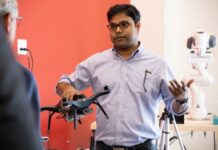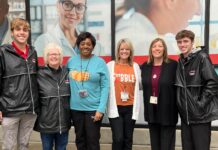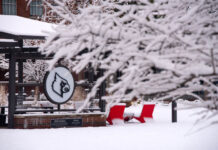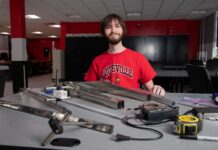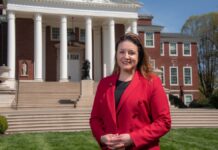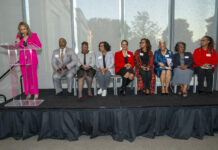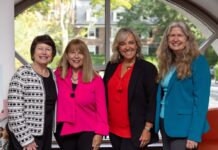LOUISVILLE, Ky. – Kindred Healthcare Inc. and the University of Louisville have formed an innovative partnership focused on creating health care technology solutions that improve the lives of the aging population.
The partnership, which is being called HIVE, is housed in 3,500 square feet of the former K-I Lumber & Building Materials office building at Floyd and Lee streets, near UofL’s Belknap Campus. The University of Louisville Foundation purchased that property two years ago.
At the site, Kindred employees work with students and faculty from UofL’s J.B. Speed School of Engineering to develop apps that will benefit the aging community. To date, the partners have built Kindred’s first mobile compliance tracking app. They currently are working on an app that would allow nurses to assess a patient’s eligibility for hospice care. Several other projects are in the pipeline.
HIVE contributors have access to the latest technology. Cisco Systems Inc., the San Jose, Calif.-based technology giant, has donated a variety of tools to the project to help Kindred team members and UofL students easily connect.
“HIVE represents our continued focus on creating a culture of innovation and agility,” said Kindred President and Chief Executive Officer Benjamin A. Breier. “As the health care landscape continues to change, it is vital to develop technology-based solutions that create new value for our patients and the customers we serve. This is an example of the ways in which companies and universities can work together for the benefit of the community, students, patients and companies such as Kindred.”
The partnership with Kindred marks the latest UofL effort to collaborate with the private sector. In 2014, the university joined forces with GE Appliances to create FirstBuild, a microfactory where collaborators create the next generation of home appliances.
“By working with corporate partners, we are able to give our students new experiences and work opportunities,” said UofL interim President Greg Postel. “These partnerships draw high-achieving students to our campus, and participants find more employment opportunities when they graduate.”
###







